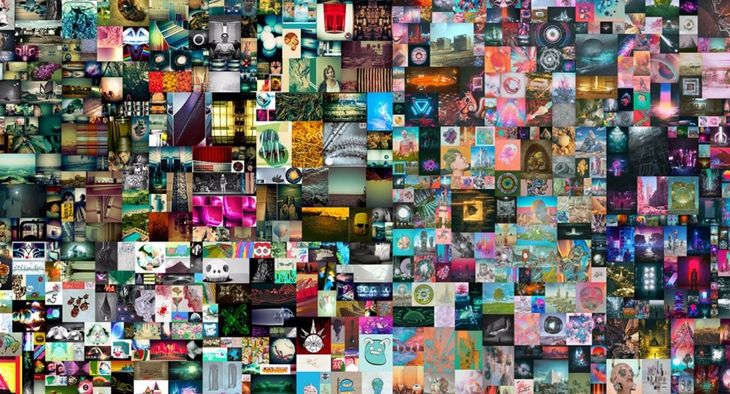As individual actors in this society, we must take advantage of new technologies not only to improve the way we communicate and relate, but also the way we educate ourselves and train ourselves to meet this demand.
Technology provides answers to these challenges and facilitates strategies according to the needs of students and the way they learn best. And, as if that were not enough, regardless of the date, time or place where it is available to acquire knowledge.
Definitely, young people know it, or at least they sense it; and demand new forms and strategies of education that facilitate learning. Even though traditional education continues to be the epicenter of skills development, today new actors are emerging that influence the learning of young people.
In principle, the latter can be considered to compete with the former. However, this rivalry is disfigured today to the extent that each other begins to use common strategies and tools, evaluate alliances and associations that, in the end, offer the student a response according to their learning needs.
Experiential Learning
Educational models may be different, but they have spaces in common. In future-oriented education the stakes are getting higher and higher towards learning by discovery itself. In these learning models, emotions are paramount and the educator offers a guide, motivating the construction of one’s own future, key in a changing world.
We can almost say that we have always believed in experiential learning. But today it takes on fundamental relevance. The phrase “learning by doing” It gains strength and is present in almost all modern pedagogical models that are based on acquiring knowledge through projects, based on problem solving and collaboration.
santander scholarships itba.jpg
These models highlight the importance of acquiring knowledge from practice, allowing each student to select the tools that will allow them to function later in the future, while the educator works as the guide who will put the different tools at their disposal to continue learning and discovering.
The trend is towards a more active than passive student. Less listener and more experimental. Less spectator and more actor. And if, as we often say, we learn 20% of what we hear, 50% of what we see and 80% of what we do; it is clear that a practical and experiential learning model is the way to go.
new ways to learn
As we have been highlighting for some time, in a knowledge-based economy, talent and human capital have become critical factors for the generation of innovation and value.
For this reason, today we are seeing a labor market with a very high demand for talents who know about technology and know how to program, who know about user experience, the development of digital products, digital marketing, communication and digital design, behavior analysis and many other technologies. . And if you can, Let this talent have experience.
NFT 2.jpg

“Everydays: the first 5000 days” is a JPG image created by American digital artist Mike Winkelmann and sold for $69 million.
Definitely, in a world where technologies change exponentially, talent expires as fast as it is developed; for this, andt is increasingly common for the market to focus on talents developed through experiential educational processes.
These new educational processes focus on the acquisition of specific knowledge, in short cycles of a few weeks where logical thinking can be developed and used to accelerate the learning process.
These processes, called ‘bootcamps’ or ‘training camps’; they are characterized by being intensive, oriented to the acquisition of certain practical knowledge through action and teamwork. The vast majority do not require academic degrees for their admission and their main objectives are to prepare the student for a demanding and volatile labor market.
These are diagrammed programs focused on training people in the skills and tools that companies need.
And as if that were not enough, due to their own characteristics, these programs promote the development of soft skills, skills that allow people to interact in and with their environment to accelerate adoption, promote innovation and integrate any type of trend, no matter how technical. let this be
Read, write and program.
It is very common to hear that the literacy of the future will be marked not only by the ability to read and write or perform basic mathematical calculations, but also to program.
Just as reading and writing allow us to communicate and mathematics to understand the world around us, programming will allow us to request and order actions in an increasingly digital world.
The world of the future will require programming skills that allow man to interact with an increasingly mechanized and automated environment.
One of the pillars of programming is logical thinking, where there are people who learn faster than others or some simply use better resources to speed up their learning process.
Bootcamps.jpg

Creativity, patience and dedication play an important role in the development of this talent; and it is precisely these skills that rank first among the demands demanded by companies to give a candidate an opportunity.
The constant learning of new programming languages and the handling of new technologies define the best programmers.
If to this, we add communication skills, teamwork, leadership, problem-solving ability and learning ability; we will definitely be training the right talent for the future of work.
Human Talent of the Future
It is necessary to give young people the possibility of developing the necessary skills that will facilitate their labor insertion today and in the future. With short inactive phases, where the search for employment is not extensive and that, from the first job, you can access quality working conditions and with possibilities for personal and professional growth.
The adoption of new technologies in companies is also associated with the adaptation and generation of new types of jobs. Those that arise from the adoption process itself and those that arise from the creation of new digital platforms.
All this has consequences for the labor market, but it also implies a demand for new skills that has an impact on the education of children, adolescents, youth and adults.
The volatility and exponentiality of technological development implies a very important challenge for the formation of skills, and therefore, for the new labor demands. To such an extent that a large part of the children and young people who today begin their training cycle will work in jobs that do not yet exist today.
The “boot camps” they are a great opportunity for those young people who want to evolve in the development of talents that allow them to be part of the future.
Strategic Alliances and Growth in Le Wagon Hispanoamérica.
Source: Ambito




